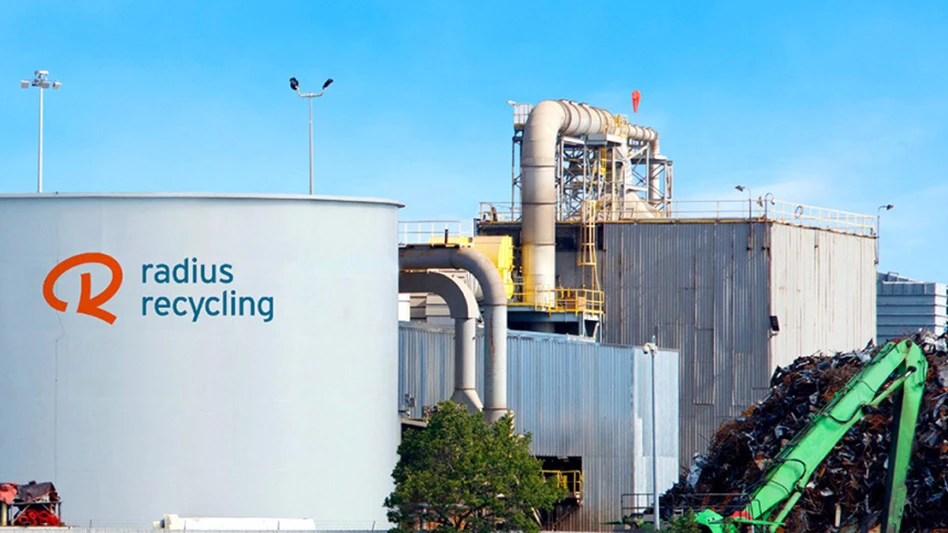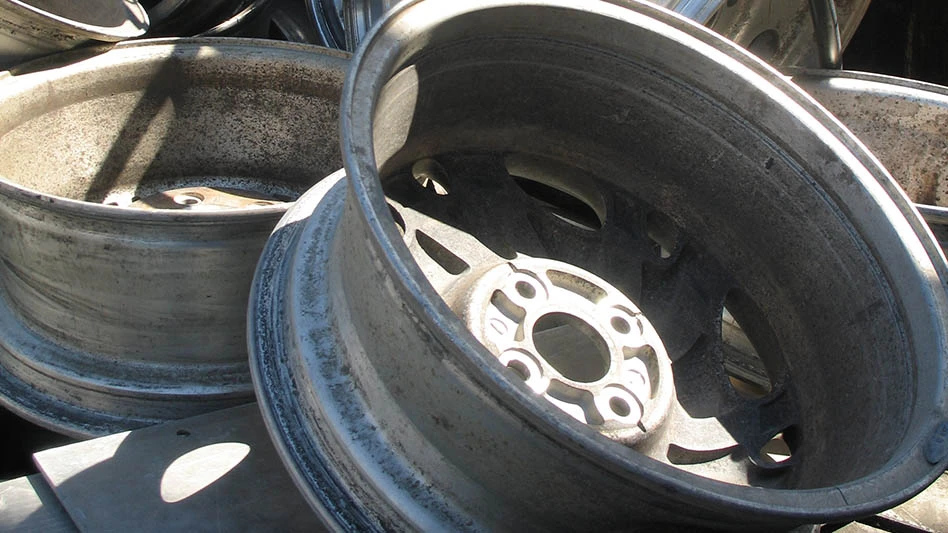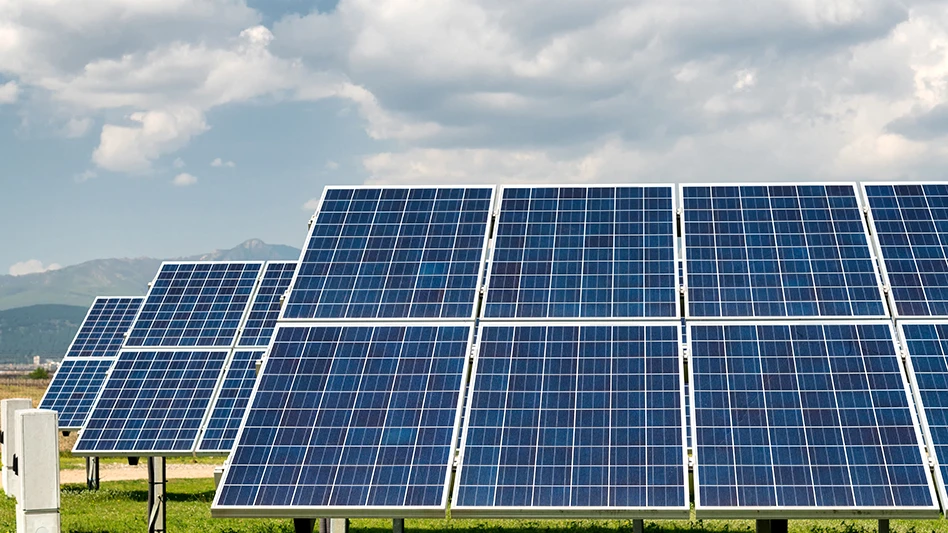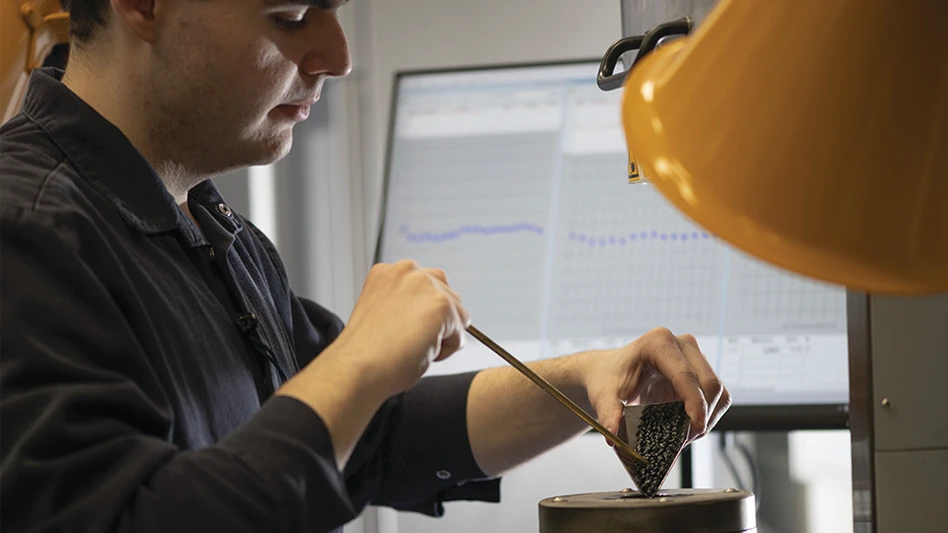
Photo courtesy of Radius Recycling Inc.
Portland, Oregon-based metals recycling and steelmaking company Radius Recycling Inc. is reporting a net loss of $34 million in its most recently completed financial quarter, which ran from Dec. 1, 2023, to Feb. 29, 2024, representing the second quarter of the company’s 2024 fiscal year.
The audited results match those anticipated and previously announced by Radius about three weeks ago.
The company, which operates dozens of metal recycling and auto dismantling facilities and one recycled-content electric arc furnace (EAF) steel mill, notes that despite the losses, volumes increased in its nonferrous scrap and finished steel sales segments in this year’s second quarter compared with one year prior.
“Market conditions during the second quarter remained challenging as tight supply flows for recycled metals and unusually wet winter weather impacted sales volumes and metals spreads for both recycled metals and finished steel,” the company writes in comments accompanying its results.
Radius cites persistently low levels of manufacturing activity in the U.S. as one reason its scrap generation figures remained "constrained.” Most of Radius’ metal recycling facilities are in the Northeast and Pacific Coast regions of the U.S.
“After strengthening in the early part of the quarter driven by restocking, market conditions for ferrous recycled metals softened due to lower global demand, including as a result of continued elevated levels of Chinese steel exports," Radius says of demand.
In its second quarter, Radius' ferrous scrap sales volumes decreased by 15 percent compared with the prior quarter, with the company citing lower supply flows and delays of certain bulk shipments at the end of the quarter.
The company says that while its nonferrous recycled metals sales volumes decreased by 3 percent sequentially, they increased by 7 percent year on year supported by additional production from the company’s advanced nonferrous recovery technologies and platform expansion.
Regarding Radius' EAF mill in Portland, finished steel sales volumes increased by 5 percent year on year, with strength in the nonresidential and infrastructure construction sectors playing a role.
On the downside in its steel sales division, Radius says demand in the western U.S. decreased by 11 percent compared with the autumn 2023 months due to seasonally lower construction demand exacerbated by a prolonged period of rain on the West Coast.
“While the near-term market conditions for recycled metals are challenging amid cyclical headwinds, we continue to move forward with our strategic initiatives to strengthen our company and position ourselves to benefit from an improvement in market conditions and positive structural demand tailwinds,” Radius CEO Tamara Lundgren says.
Adds Lundgren, “Scrap supply flows should benefit from a decline in U.S. interest rates and a recovery in global manufacturing activity. Additionally, the long-term structural demand for recycled metals remains positive, supported by the increased focus on decarbonization, the transition to low-carbon technologies and the anticipated demand associated with the Infrastructure Investment and Jobs Act and the Inflation Reduction Act, including Buy Clean provisions.”
Radius says during its 2024 fiscal year second quarter, it also began implementing a plan intended to “deliver $40 million in aggregate annual benefits by reducing selling, general and administrative (SG&A) expense by 10 percent and increasing production cost efficiencies.”
These savings, if realized, would be in addition to an initial $30 million in previously undertaken measures Radius says were substantially implemented in the second quarter.
“During the [second] quarter we significantly expanded our fiscal 2024 cost savings and productivity improvement program and saw benefits from our ongoing investments in advanced metal recovery technology systems and our recycling services platform,” Lundgren says.
Latest from Recycling Today
- New recycling grant program launches in Massachusetts
- Tire Recycling Foundation names executive director
- Dock 7 named 2025 Exporter of the Year at New Jersey International Trade Awards
- Waste Connections reports ‘better than expected’ Q1 results
- Commentary: How EPR is transforming the packaging industry
- Acerinox names new North American Stainless CEO
- Greenwave closes 2024 books with red ink
- Steel Dynamics nets $217M on record shipments






